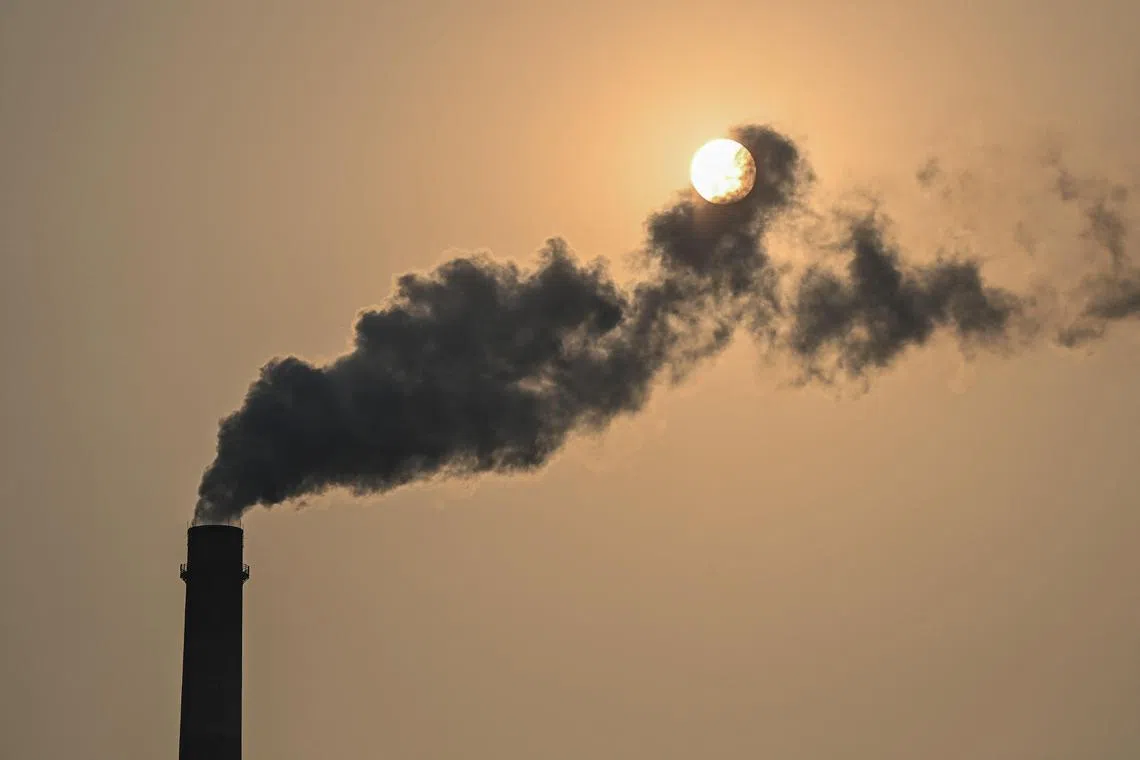Less than 1% of earth has safe levels of air pollution, study finds
Sign up now: Get ST's newsletters delivered to your inbox

Air quality is particularly worrisome in regions such as southern Asia and eastern Asia, the study found.
PHOTO: AFP
Follow topic:
MELBOURNE – It is no secret that air pollution is a serious problem facing the world today. Just how serious? A new study on global daily levels of air pollution shows that hardly anywhere on earth is safe from unhealthy air.
About 99.82 per cent of the global land area is exposed to levels of particulate matter 2.5 (PM2.5) – tiny particles in the air that scientists have linked to lung cancer and heart disease – above the safety limit recommended by the World Health Organisation (WHO), according to the peer-reviewed study published on Monday in The Lancet Planetary Health journal.
And only 0.001 per cent of the world’s population breathes in air that is considered acceptable, the paper says.
Conducted by scientists in Australia and China, the study found that on the global level, more than 70 per cent of days in 2019 had daily PM2.5 concentrations exceeding 15 micrograms (mcg) of gaseous pollutant per cubic m – the WHO recommended daily limit.
Air quality is particularly worrisome in regions such as southern Asia and eastern Asia, where more than 90 per cent of days had PM2.5 concentrations above the 15mcg threshold.
While any amount of PM2.5 is harmful, scientists and regulators are typically less concerned about daily levels than they are about chronic exposure.
“I hope our study can change the minds of scientists and policymakers on daily PM2.5 exposure,” said the lead researcher, environmental health professor Yuming Guo of Monash University.
“Short-term exposure – particularly a sudden increase – to PM2.5 (is linked to) significant health problems.”
While scientists and public health officials have long been alert to the dangers – air pollution kills 6.7 million people a year, with nearly two-thirds of the premature deaths caused by fine particulate matter – quantifying the global exposure to PM2.5 was a challenge because of a lack of pollution monitoring stations.
Prof Guo and his co-authors overcame that challenge by marrying ground-based air pollution measurements collected from more than 5,000 monitoring stations worldwide with machine learning simulations, meteorological data and geographical factors to estimate global daily PM2.5 concentrations.
When estimating annual exposure across all regions, the researchers found that the highest concentrations occurred in eastern Asia (50mcg per cubic m), followed by southern Asia (37mcg) and northern Africa (30mcg).
Residents of Australia and New Zealand faced the least threat from fine particulate matter, and some regions in Oceania and South America were among the places with the lowest annual PM2.5 concentrations.
The researchers also examined how air pollution changed over the two decades up to 2019.
For instance, most areas in Asia, northern and sub-Saharan Africa, Oceania, and Latin America and the Caribbean experienced an increase in PM2.5 concentrations over the 20 years, driven in part by intensified wildfires.
Annual PM2.5 concentrations and high-PM2.5 days in Europe and North America decreased, thanks to stricter regulations.
Fine particulate matter is made up of soot from vehicles, smoke and ash from wildfires and biomass cooking-stove pollution, plus sulphate aerosols from power generation and desert dust.
The study also points out how levels of fine particulate matter vary depending on the season, a reflection of human activities that accelerate air pollution.
For instance, north-east China and northern India recorded higher PM2.5 concentrations from December to February, most likely linked to an increased use of fossil fuel-burning heat generators during the winter months.
South American countries such as Brazil, on the other hand, had increased concentrations between August and September, probably connected to slash-and-burn cultivation in the summer. BLOOMBERG

